Yokozuna Akebono Retirement Ceremony: Makushita & Juryo Wrestlers

First, you have to understand that a retirement ceremony for an important sumo wrestler includes a variety of activities besides the actual ceremony of cutting off the topknot. It involves almost the entire Japan Sumo Association, and most wrestlers in the top three divisions (Makunouchi, Juryo, and Makushita) also appear in exhibition matches.
The program started at 11:30 am with an attention-getting taiko performance on the sumo ring. Then exhibition matches by the Makushita Division (幕下) wrestlers started.

The Makushita Division is the third highest division in sumo and they usually don’t have famous wrestlers, so most people skip seeing this part of the program.
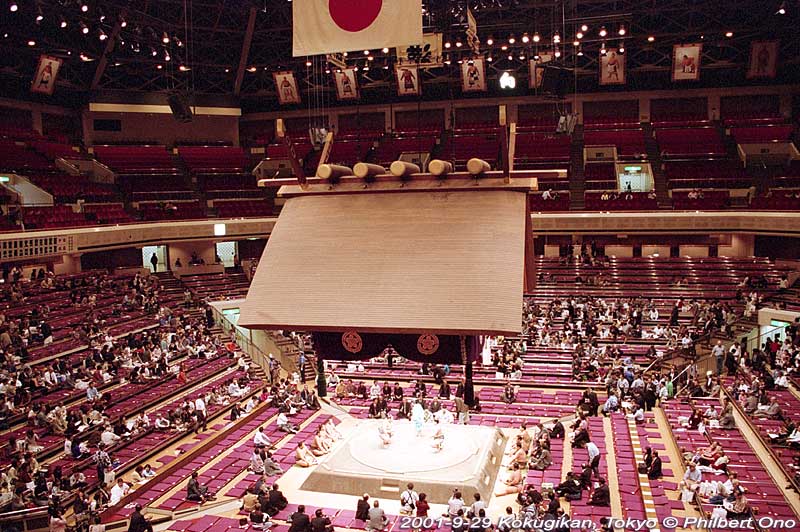
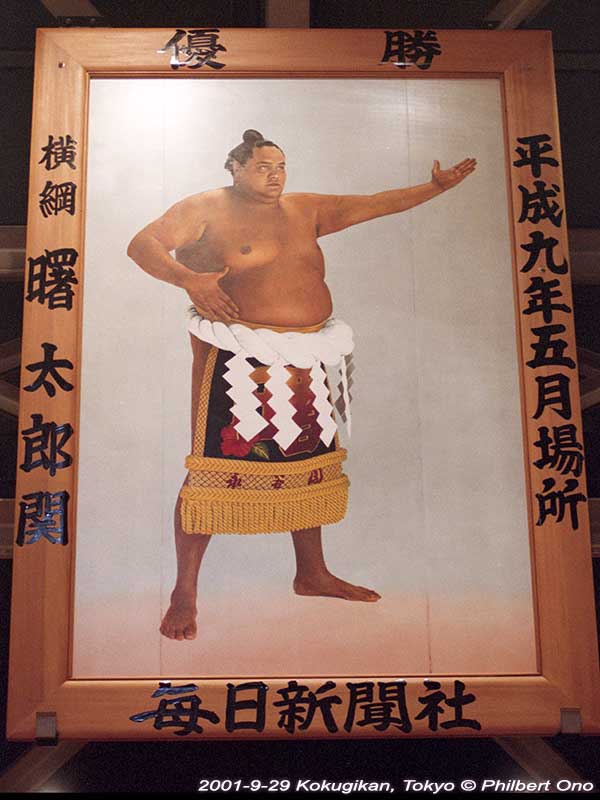
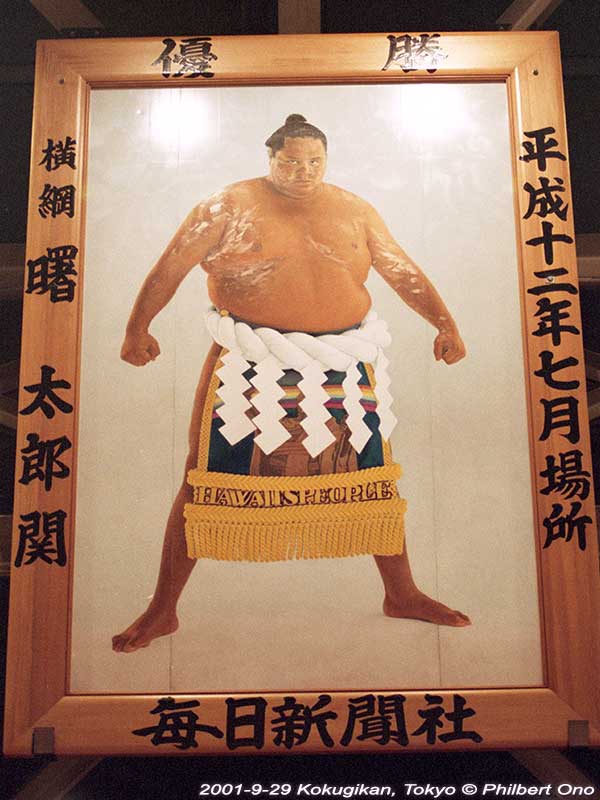
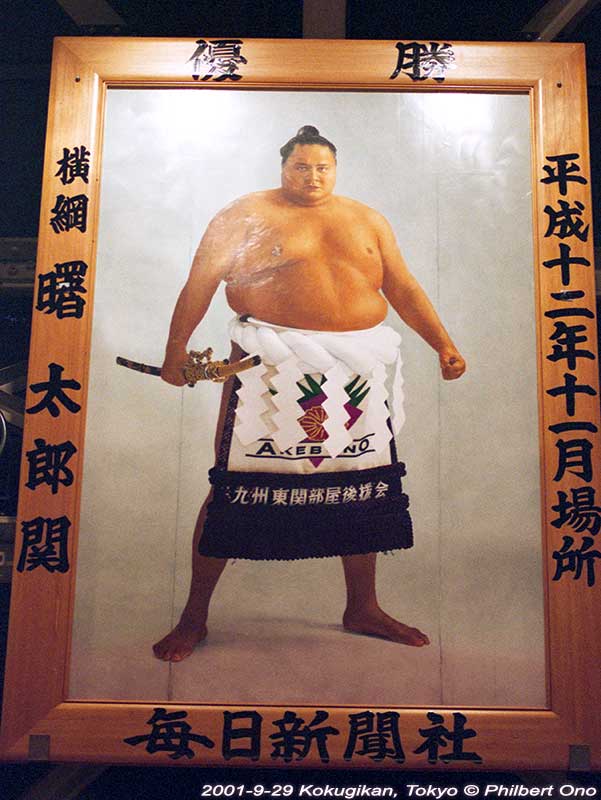
Each time a wrestler wins a sumo tournament, a large, framed portrait of him is made and hung in the Kokugikan. They are tournament victory portraits (yusho-gaku 優勝額).
These framed portraits are larger than life. A black-and-white photograph of the wrestler is taken in a photo studio and printed on large paper. Then it is hand-tinted in color by a woman who has been doing it for years. Some of the paint has peeled off in the above pictures.
On the wooden frame, the top kanji characters say “Yusho” (tournament winner 優勝). The left characters are “Yokozuna Akebono Taro” (横綱 曙 太郎), and the right characters indicate the tournament date (Heisei Era year and month).
One ceremonial apron design includes the kanji character for “Akebono” superimposed with a rising sun design, and a red hibiscus complementing it. (Hibiscus is Hawaii’s state flower, and “Akebono” means dawn or rising sun.) Another one has “Hawaii’s People” on the bottom, apparently presented by the state of Hawaii.
The Kokugikan displays 32 victory portraits (eight on each of the four sides of the building) and two of the oldest ones are replaced with the latest two tournament winners three times a year. So each portrait hangs in the Kokugikan for about five years before it is replaced.
After the victory portrait is finished hanging in the Kokugikan, it is given to the wrestler. If the wrestler has won many tournaments, he might not have enough room in his house or sumo stable to display or store the giant portraits. So it is usually given to a facility or venerated sponsor or supporter. Yokozuna like Taiho, Kitanoumi, and Chiyonofuji have their own sumo museums (all three in Hokkaido) where their victory portraits hang.
You can also see a few victory portraits inside JR Ryogoku Station near the Kokugikan.

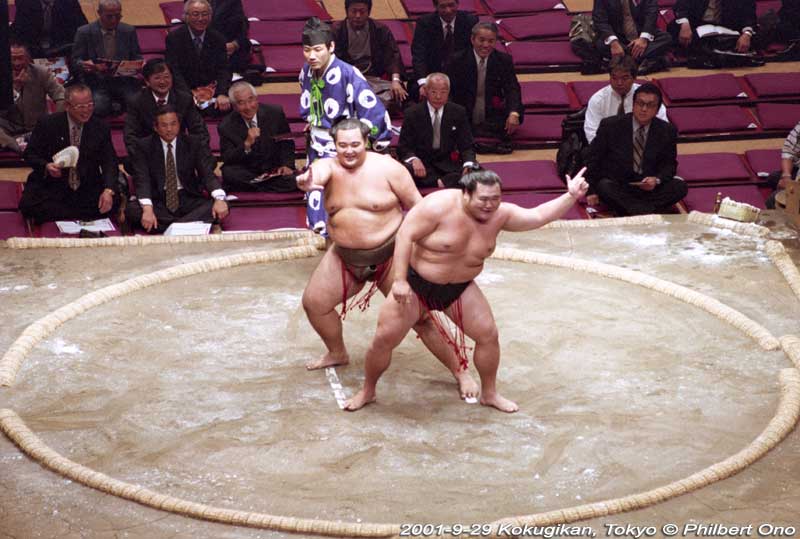
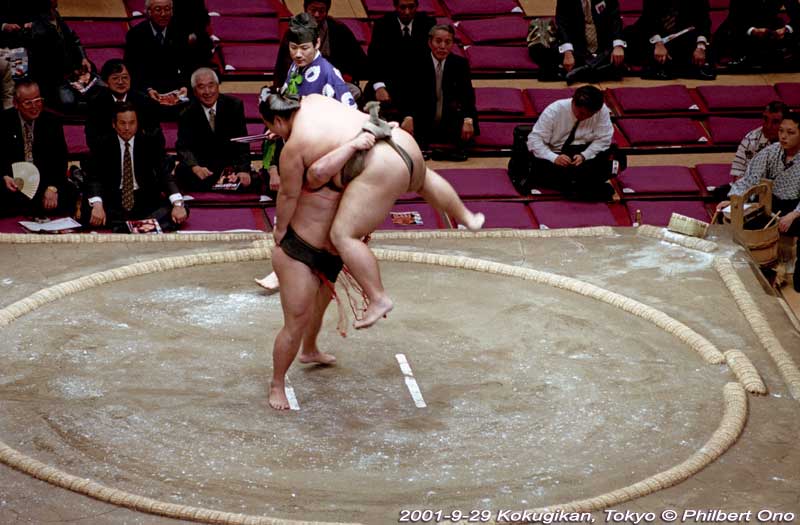
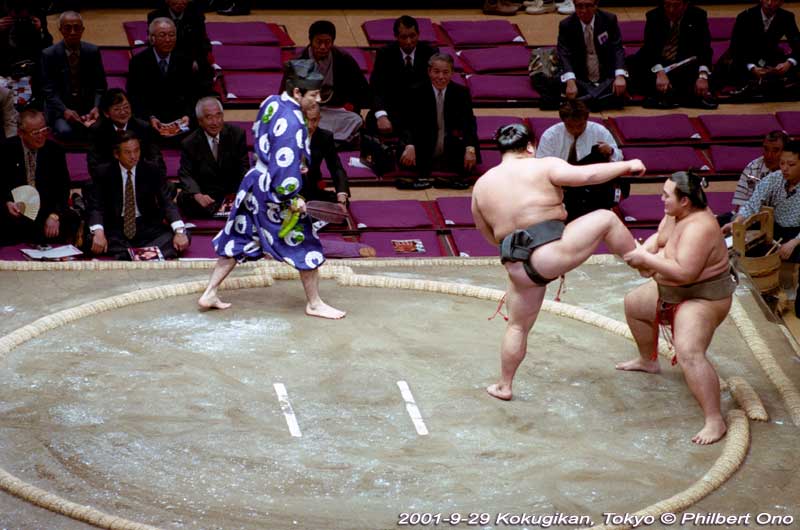
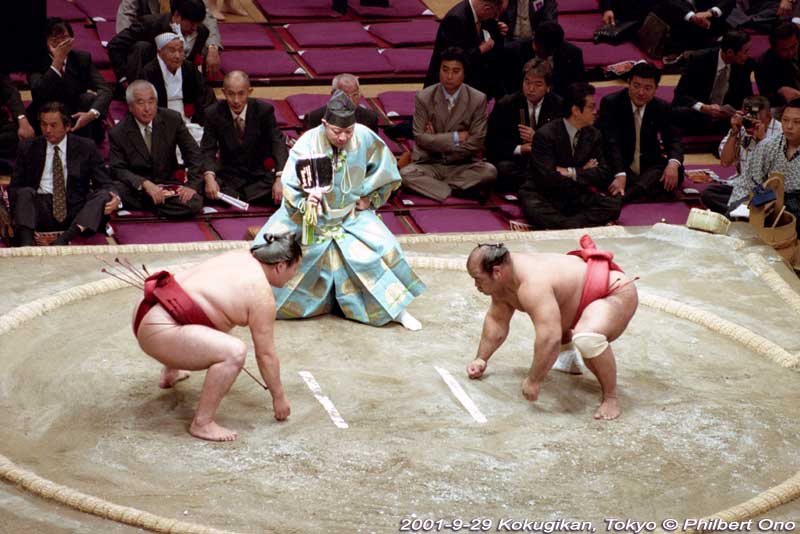
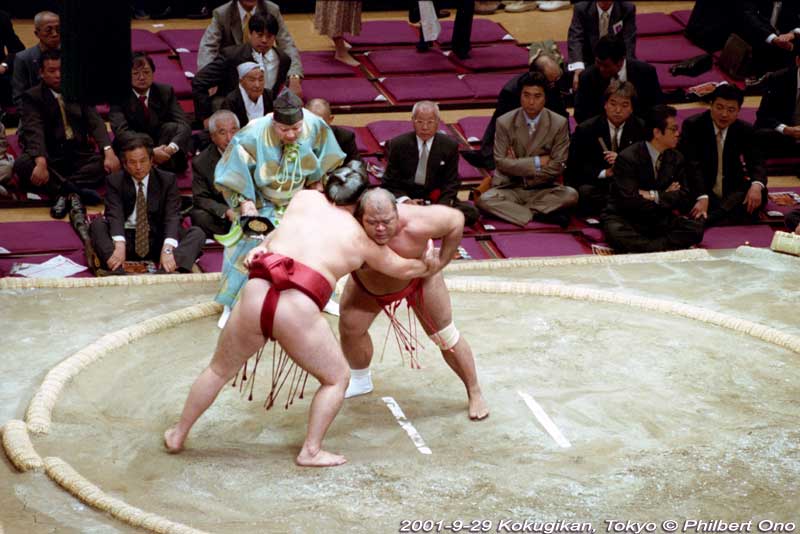
Akebono Retirement Ceremony: Greetings | Merch | Makushita/Juryo | Rope belt | Final Dohyo-iri | Demos | Topknot cutting | Final cut | Makunouchi